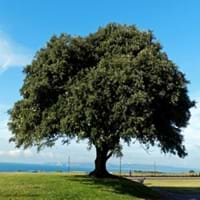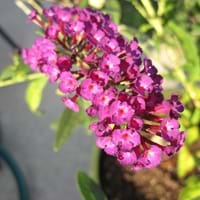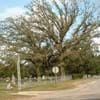Life Span
Perennial
Perennial
Type
Tree
Flowering Plants, Shrubs
Origin
Southern Europe, Mediterranean, Northern Africa
Africa, America, Asia
Types
Quercus ilex, Quercus rotundifolia
Lockinch, Petite Indigo, White Profusion
Habitat
Mediterranean region
Along Railroads, River side, Roadsides
USDA Hardiness Zone
4-8
5-10
Sunset Zone
4, 5, 6, 7, 8, 9, 10, 11, 12, 13, 14, 15, 16, 17, 18, 19, 20, 21, 22, 23, 24
H1, 2a, 2b, 3a, 3b, 4, 5, 6, 7, 8, 9, 10, 11, 12, 13, 14, 15, 16, 17, 18, 19, 20, 21, 22, 23, 24
Habit
Oval or Rounded
Arching/Fountain-shaped
Flower Color
Red, Yellow green
Blue, Pink, Purple, Red, White
Flower Color Modifier
Bicolor
Not Available
Fruit Color
Brown, Sandy Brown, Chocolate
Not Available
Leaf Color in Spring
Green, Dark Green
Gray Green
Leaf Color in Summer
Dark Green
Gray Green, Light Green
Leaf Color in Fall
Dark Green
Gray Green, Light Green, Yellow green
Leaf Color in Winter
Dark Green
Not Available
Leaf Shape
Oblong or Lanceolate
Egg-shaped
Plant Season
Spring, Summer, Fall, Winter
Fall, Spring, Summer, Winter
Sunlight
Full Sun, Partial Sun
Full Sun, Part sun, Partial shade
Type of Soil
Clay, Loam, Sand
Loamy, Sandy, Well drained
The pH of Soil
Acidic, Neutral, Alkaline
Neutral, Slightly Acidic, Slightly Alkaline
Soil Drainage
Average
Well drained
Tolerances
Pollution, Drought, Salt
Drought, Pollution, Salt, Soil Compaction
Where to Plant?
Ground
Ground, Pot
How to Plant?
Grafting, Seedlings
Seedlings, Stem Planting, Transplanting
Plant Maintenance
Medium
Medium
Watering Requirements
Average Water Needs, Do Not over Water, Requires regular watering
Form a Soil ring to water efficiently, Water Deeply, Water twice a day in the initial period
In Summer
Lots of watering
Lots of watering
In Spring
Moderate
Moderate
In Winter
Average Water
Average Water
Soil pH
Acidic, Neutral, Alkaline
Neutral, Slightly Acidic, Slightly Alkaline
Soil Type
Clay, Loam, Sand
Loamy, Sandy, Well drained
Soil Drainage Capacity
Average
Well drained
Sun Exposure
Full Sun, Partial Sun
Full Sun, Part sun, Partial shade
Pruning
Remove damaged leaves, Remove dead branches, Remove dead leaves
Cut or pinch the stems, Prune for shortening long shoots, Prune if you want to improve plant shape, Prune ocassionally, Remove damaged leaves, Remove dead or diseased plant parts, Remove deadheads, Remove shoots
Fertilizers
fertilize in fall, Nitrogen, Phosphorous, Potassium
All-Purpose Liquid Fertilizer
Pests and Diseases
Aphids, Disease free, Moth
Downy mildew, Leaf spot, Spider mites
Plant Tolerance
Pollution, Shade areas
Drought
Flowers
Insignificant
Yes
Flower Petal Number
Not Available
Single
Foliage Texture
Medium
Medium
Foliage Sheen
Glossy
Matte
Attracts
Birds, Insects
Butterflies, Hummingbirds
Allergy
Not Available
Vomiting
Aesthetic Uses
Cottage Garden
Showy Purposes
Beauty Benefits
Good for skin, Skin Problems
Not Available
Environmental Uses
Nesting sites for birds, Shadow Tree
Air purification
Medicinal Uses
Digestive, Skin irritation
Not Available
Part of Plant Used
Bark, Fruits, Wood
Flowers, Leaves
Other Uses
Charcoal, Used as firewood, Used for its medicinal properties, Wood is used fore making tools
Showy Purposes, Used as Ornamental plant
Used As Indoor Plant
No
No
Used As Outdoor Plant
Yes
Yes
Garden Design
Feature Plant, Hedges, Screening / Wind Break, Shade Trees, Street Trees
Edging, Feature Plant, Foundation
Botanical Name
QUERCUS ilex
Buddleia davidii
Common Name
Evergreen Oak, Holly Oak, Holm Oak
Butterfly Bush, Summer Lilac, Butterflybush
In Hindi
होल्म ओक
Butterfly Bush
In German
Steineiche
Schmetterlingsstrauch
In French
chêne vert
buisson de papillon
In Spanish
encina
arbusto de las mariposas
In Greek
πρινόδενδρο
Butterfly Μπους
In Portuguese
azinheira
arbusto de borboleta
In Polish
dąb skalny
Butterfly Bush
In Latin
ilice
papilio rubo
Phylum
Magnoliophyta
Spermatophyta
Class
Magnoliopsida
Dicotyledonae
Family
Fagaceae
Scrophulariaceae
Clade
Angiosperms, Eudicots, Rosids
Angiosperms, Asterids, Eudicots
Tribe
Not Available
Not Available
Subfamily
Not Available
Not Available





